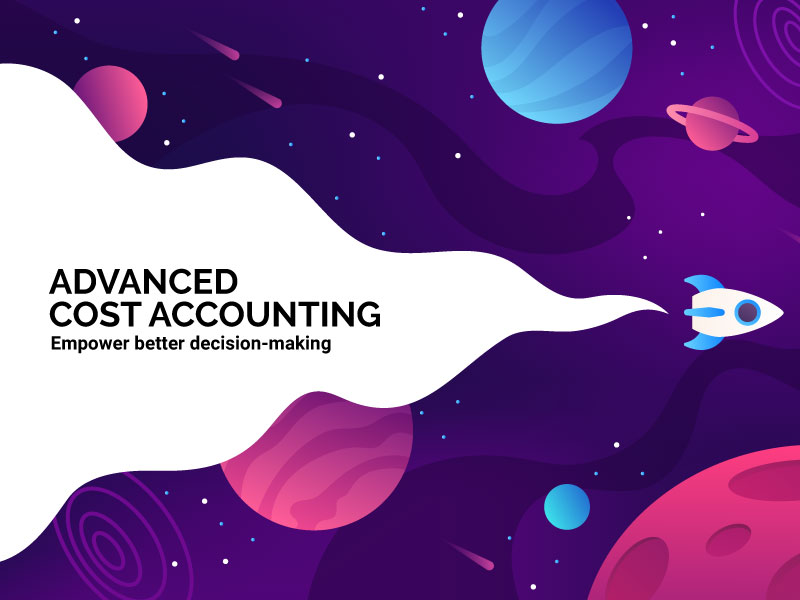Containing costs and exploring new revenue options are critical considerations for hospitals and health systems — 82% of healthcare finance leaders say cost management and reductions are very important to maintaining or rebuilding their organizations’ fiscal health.
And though organizations working to improve cost accounting quickly realize that spreadsheets cannot meet healthcare’s modern finance demands, only 48% said their cost accounting processes were optimized for efficiency, accuracy, and savings.
To increase the accuracy and timeliness of data used in cost accounting, finance leaders need to integrate their cost accounting solutions with other financial tools so organizations can quickly respond to changing market conditions. Our recent roundtable discussion captured three healthcare organizations’ unique journeys from basic to advanced cost accounting using Axiom™ Cost Accounting.
Involve Key Stakeholders Early to Speed Adoption
Advanced cost accounting practices require sophisticated software tools, but adopting them shouldn’t be a burden.
“Full organizational engagement will lead to a smoother implementation,” says Ben Moncher, Senior Director of Finance, Fisher-Titus Medical Center in Norwalk, Ohio. “We reached out to many key stakeholders before the process even started, including the nursing leadership team, surgical services, health information management, and registration.”
Look for a modern cost accounting system that’s designed to fit your unique needs — even as those needs change — advises Robert Muzny, Director, Decision Support, Norman Regional Health System, in Norman, Oklahoma.
“We trusted our previous vendor to improve and update the system whenever local changes were made,” Muzny says. “But looking back at the detail that we've been able to build into Syntellis’ Axiom Cost Accounting, I’m now very aware of the number of decisions that were being made by our previous vendor without our input.”
Debbi Burns, Director, Budget & Decision Support at NorthBay Healthcare, a member of the Mayo Clinic Care Network, affirmed the importance of establishing internal buy-in and cross-departmental support. Getting everyone onboard instills confidence in the process and underscores the overall goal: adopting advanced cost accounting so that all departments have valuable insights that aid decision-making and reduce costs. She also recommends exploring the functionality of any new system with great deliberation, resisting the urge to go full bore right out of the box.
Find the Right Costing Method for Each Service Line
Axiom Cost Accounting features a wide range of costing methods from basic to advanced, allowing organizations to start at a foundational level and add more complex measures as confidence and buy-in grow. Organizations using complex costing methods better understand the source of variations and can take more definitive action.
Costing methodologies include ratio of cost to charges (RCCs), microcosts, transaction-level microcosts, relative value units (RVUs), markup RCUs, direct-to-encounter, and simultaneous equations — with more advanced costing methodologies added during each software release.
To improve data visibility at NorthBay Healthcare, Burns and her team use a combination of RVUs, microcosting, and reverse markup. Reviewing data is critical, she notes, and Axiom’s transparent data processes help her team reconcile a variance between data received from outside the department and expected results. With Axiom, the finance department can examine the data, make necessary adjustments, and rerun reports.
Data transparency makes it easier to apply different costing methodologies for different areas. Norman Regional predominantly uses RCC. However, the system uses RVUs for imaging and microcosting for implants and pharmaceuticals, mainly due to cancer drugs. Muzny says his department is looking at microcosting for certain surgical supplies.
Moncher’s team uses RVUs for the Fisher-Titus physician group, where accuracy is particularly critical. Finance takes a provider’s wages and other compensation and allocates that toward the costing items in that physician’s area of responsibility, allowing a precise alignment of costs to cost centers. Besides accurate costing, Moncher says this ensures data transparency throughout the organization.
Fisher-Titus will soon upgrade its general ledger and supply chain solutions, opening up new cost accounting avenues. Once complete, Moncher says finance plans to do microcosting for medical supplies and implants and reverse markup for pharmaceuticals.
“We’re really excited to get into the numbers, because these areas present a lot of questions over the data, and how different groups or physicians use those supplies,” Moncher says. The health system also plans to speed up the costing cycle from annual to a monthly basis for service line reporting.
Taking the Steps from Basic to Advanced Costing
Moving from basic to more advanced cost accounting is like the thousand-mile journey that begins with a single step. A well-considered roadmap will help you stay on track, as will plenty of feedback about the progress of the journey thus far.
Norman Regional Health System has taken the path of continuous improvement as defined by PDSA: plan, do, study, act. Because the system is relatively new to using Axiom Cost Accounting, Muzny’s team works deliberately across departments to clean up data flowing into Axiom, ensure users enter data in the same way, and carefully check the resultant reports.
“How do we get to actionable data? It happens through a feedback loop,” Muzny says. Axiom is designed to maximize data usability and extensibility by integrating data from multiple systems, ensuring all inputs are immediately available across the platform, supporting unlimited data entry, and offering robust reporting. “We continue to refine our processes, but it’s really great to see your data doing what it’s supposed to do and supporting decision-making throughout the organization.”
As the volume and complexity of data increase, organizations need more rigorous processes. Fisher-Titus has embraced a data governance model, bringing together leaders across registration, health information management, service lines, and more to create common data definitions, fields, and data entry methods, Moncher explains.
Rather than tackle everything at once, the data governance committee started with the easier data fields, changing workflows and normalizing data across the organization. Each month, the committee identifies a new field to work on, Moncher says.
Burn from NorthBay underscores the importance of data integrity, noting that bad data input results in bad data output. “Our team builds a lot of reports and data analytics within Axiom so we can provide more ad hoc data,” Burns says.
Her department works with IT to ensure data accuracy, tracing any erroneous data to its source for correction. “There's nothing worse than presenting data to a VP who says, ‘Well, this is completely different than what somebody else provided me a week ago,’” says Burns.
Syntellis’ Axiom™ Enterprise Decision Support (EDS) empowers healthcare organizations to improve financial, operational, and clinical performance by integrating accurate, flexible, and comprehensive data to support strategic and tactical analysis. EDS users drive decision-making with insightful views of volume, cost, and profitability measures across service lines, physicians, payers, cohorts, and populations.
Insights on cost accounting for healthcare organizations:

How 3 Hospitals Leveraged Advanced Decision Support Systems to Drive Success

How to Maximize Impact with Axiom Enterprise Decision Support


